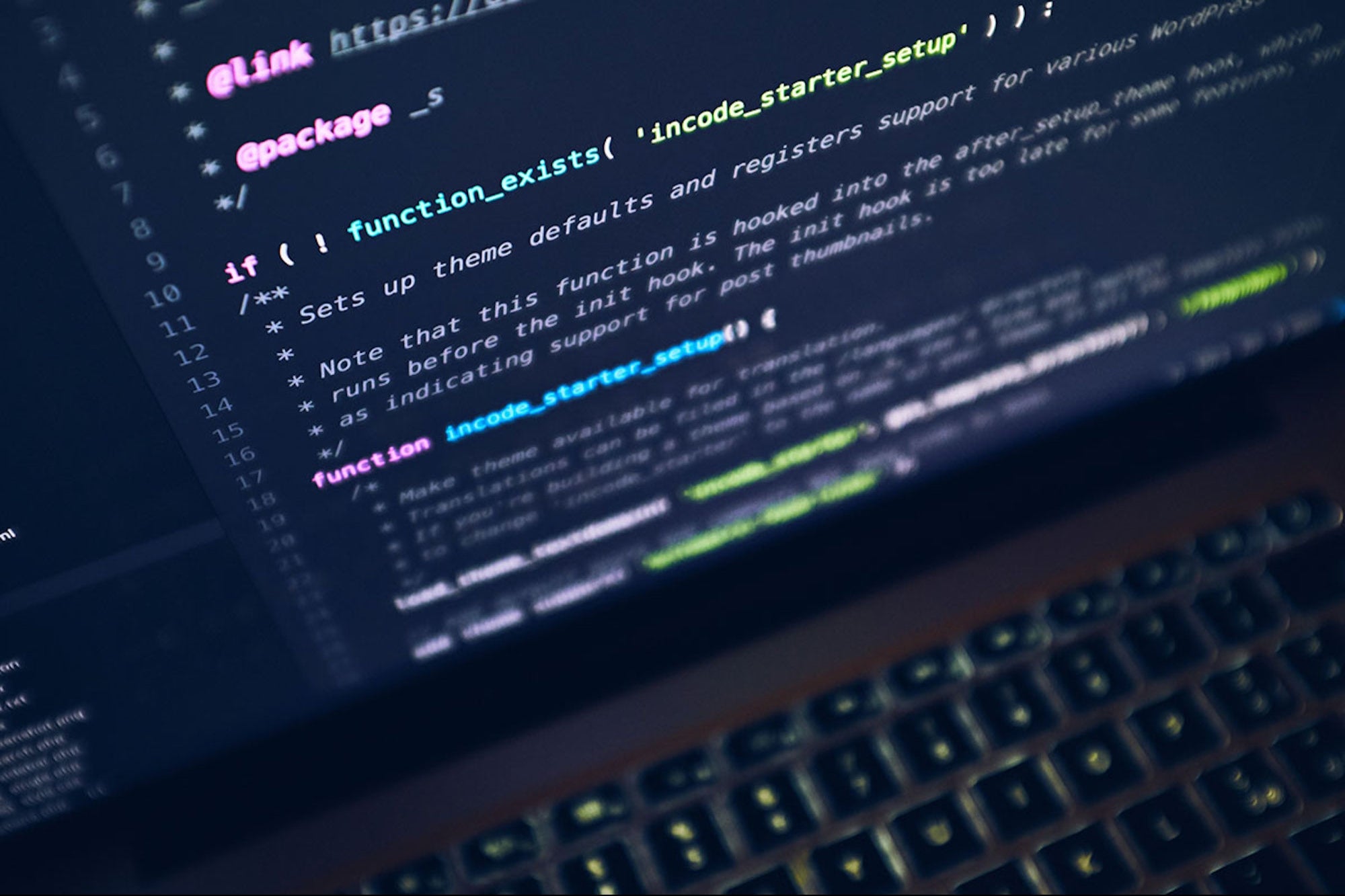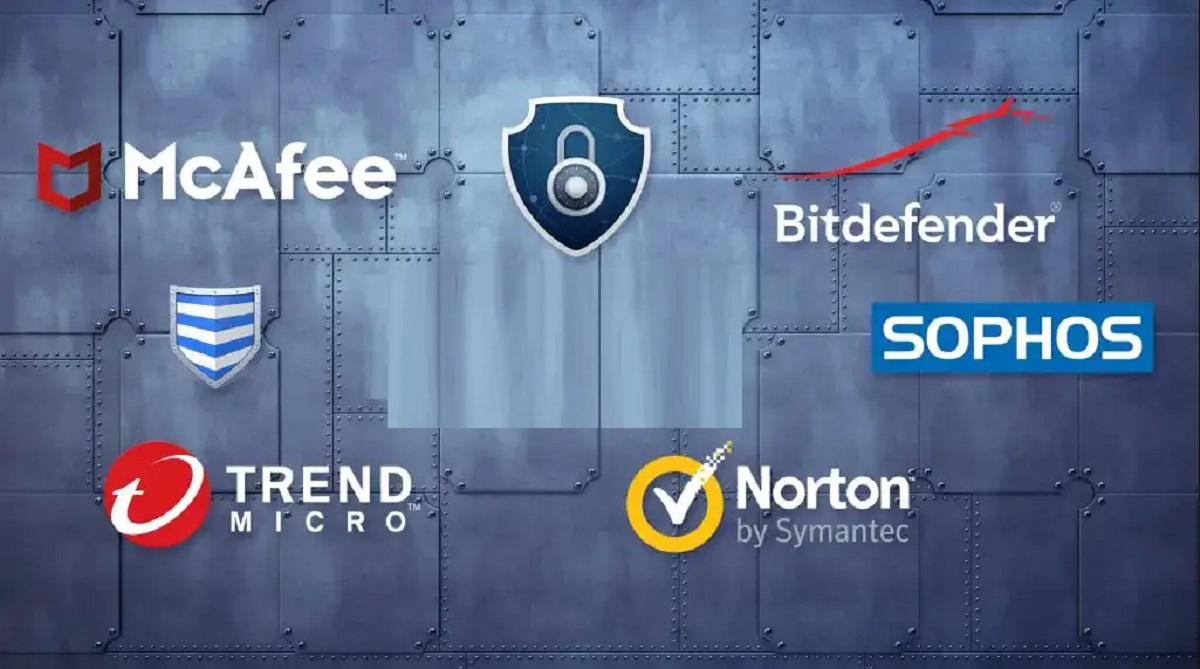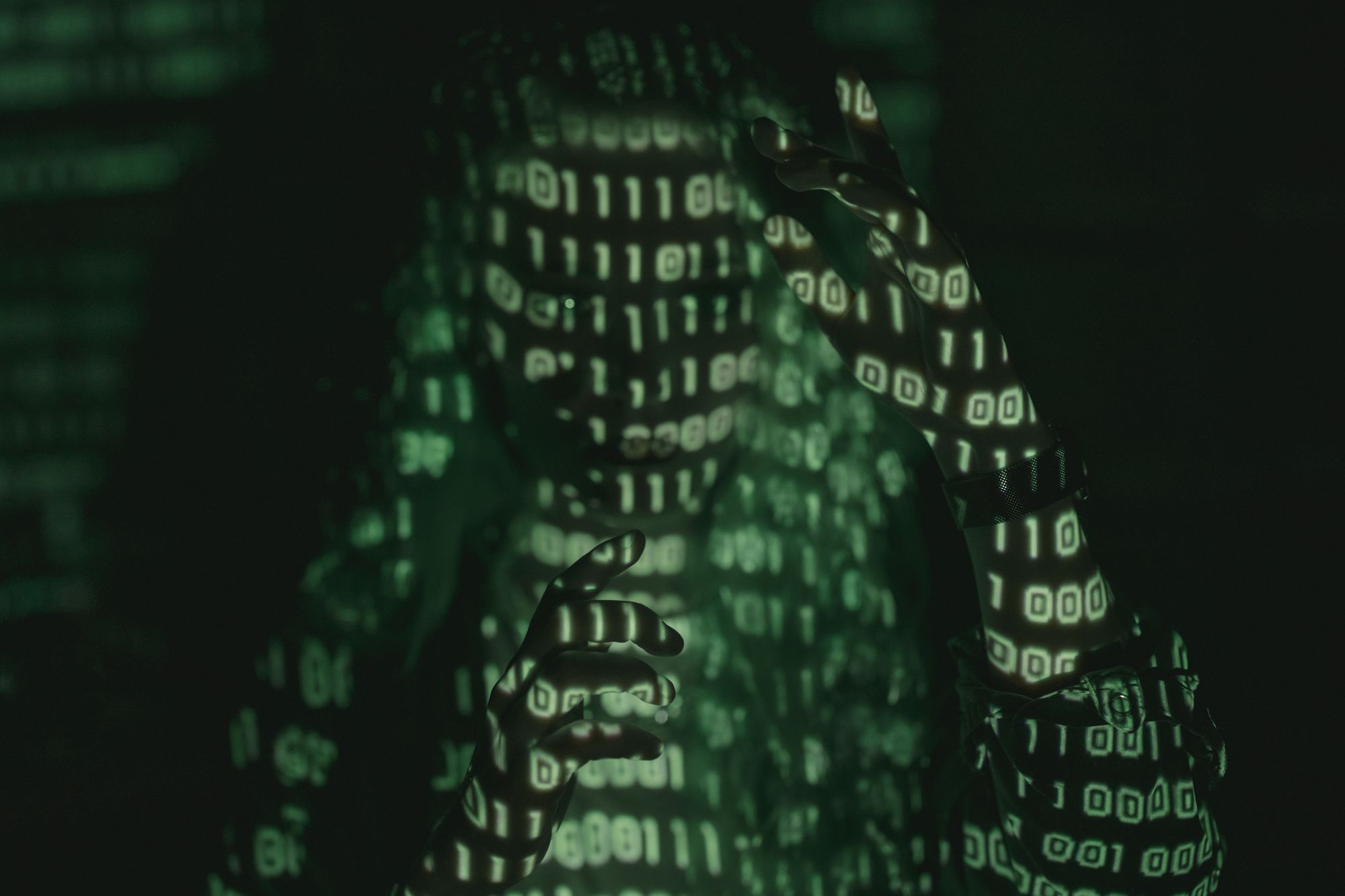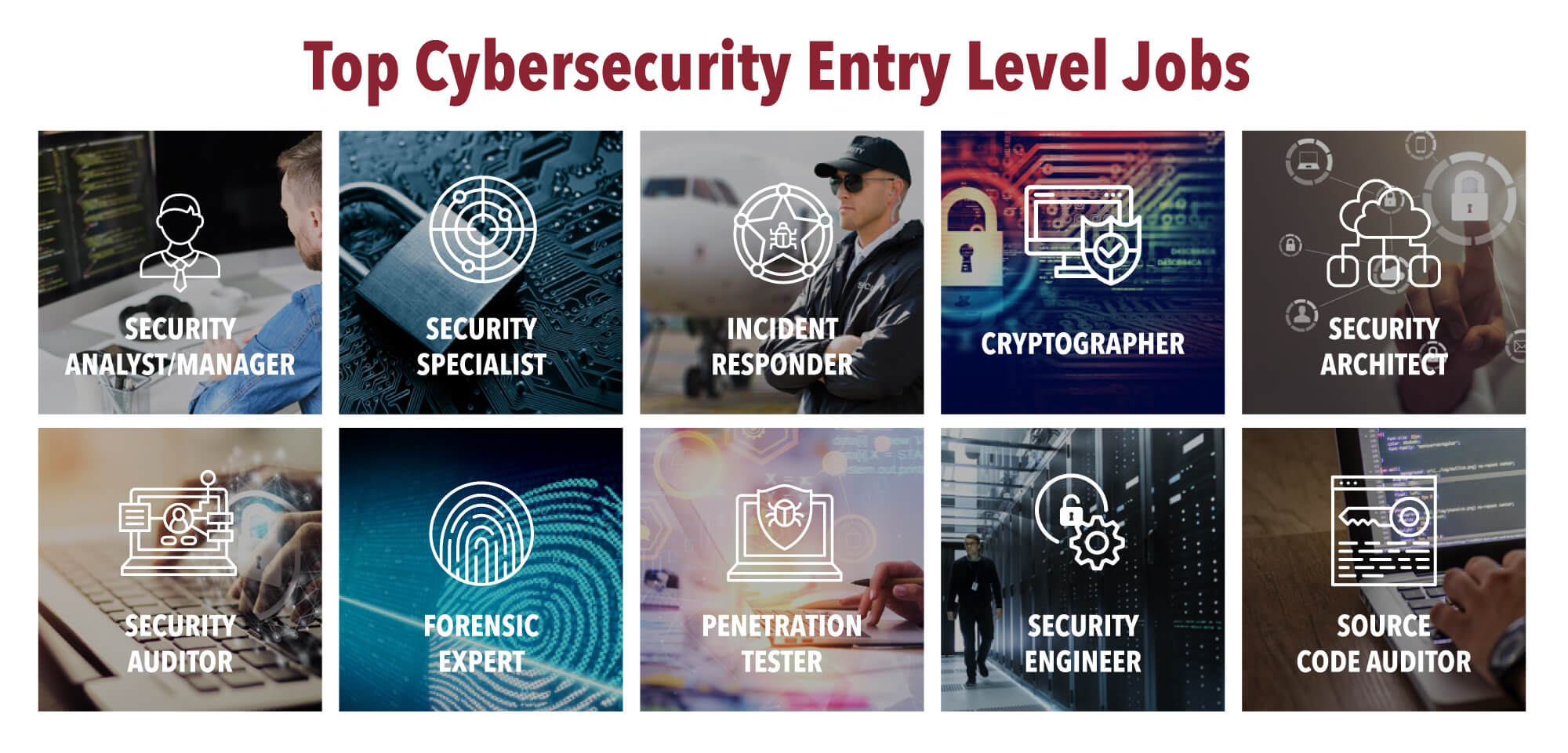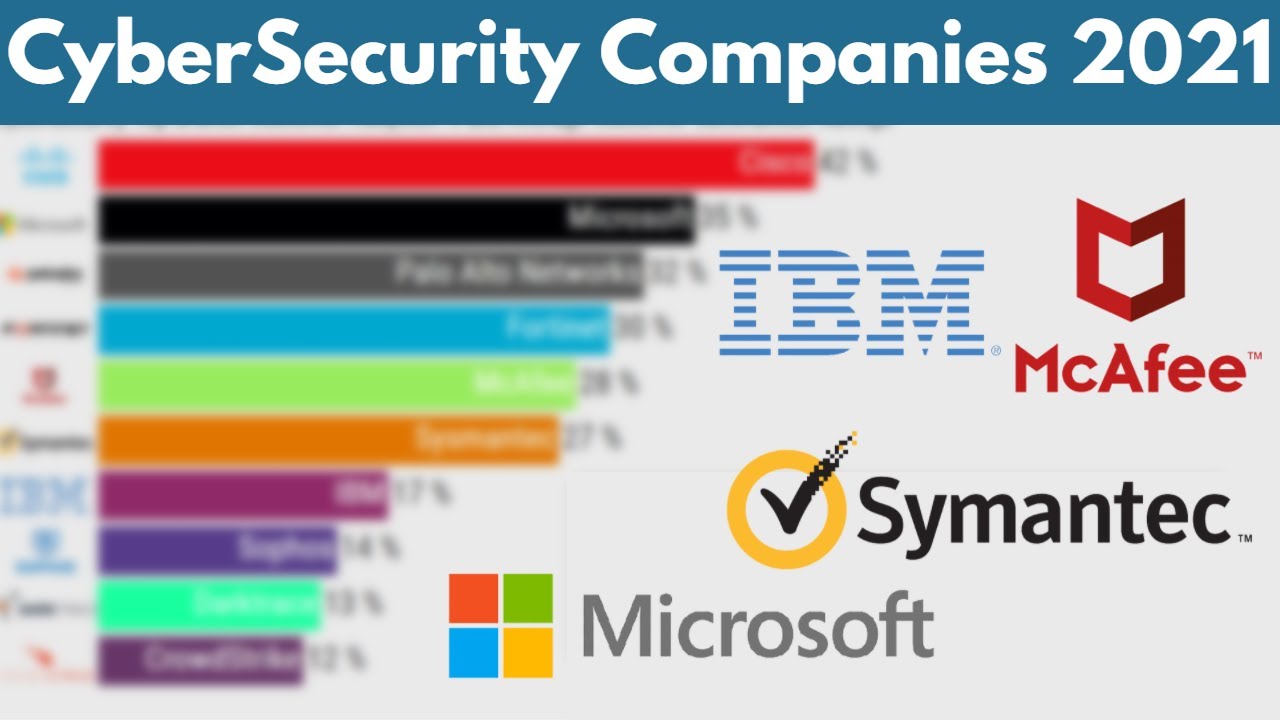Introduction
In today’s increasingly digitized business landscape, cybersecurity has become a paramount concern for organizations of all sizes. The rise in cyber threats and attacks has put sensitive data, financial stability, and even the reputation of companies at risk. Given this ever-growing menace, it is crucial for the C-suite, the highest level decision-makers in an organization, to understand and prioritize cybersecurity.
As the leaders responsible for guiding the strategic direction of the company, the C-suite plays a pivotal role in mitigating cyber risks, protecting sensitive information, and ensuring the long-term sustainability of the organization. With the potential consequences of a cyber attack ranging from financial losses to reputational damage, it is essential for executives to equip themselves with an understanding of cybersecurity and its implications.
Moreover, the C-suite’s active involvement in cybersecurity initiatives can inspire a culture of security throughout the organization. When executives prioritize cybersecurity, employees at all levels will recognize its significance and follow best practices. By fostering a strong cybersecurity culture, companies can better defend against sophisticated attacks and reduce the likelihood of successful breaches.
This article will delve into the key reasons why cybersecurity is of paramount importance for the C-suite. It will outline the evolving cyber threat landscape, highlight the role of leadership in establishing a robust cybersecurity culture, and discuss the governance and risk management responsibilities of the C-suite. Additionally, it will explore key cybersecurity risks and mitigation strategies, the importance of an effective incident response plan, as well as regular security assessments and audits.
Compliance with industry regulations and educating the C-suite on cybersecurity will also be explored. Furthermore, the article will emphasize the significance of collaboration between the C-suite and the IT and security teams, as well as the need for ongoing cybersecurity training and education for executives.
Importance of Cybersecurity for the C-Suite
Cybersecurity is no longer an issue that can be delegated solely to IT departments. It has become a strategic priority that demands the attention and involvement of the C-suite. The consequences of a cyber attack can have far-reaching implications, affecting not only the financial stability of a company but also its reputation and customer trust. Understanding the importance of cybersecurity helps the C-suite make informed decisions, mitigate risks, and protect their organization’s future.
First and foremost, executives must recognize that cyber threats are increasing in sophistication and frequency. Cybercriminals continually evolve their tactics, leveraging advanced technologies and social engineering techniques to bypass traditional security measures. By staying informed about the latest threat landscape, the C-suite can proactively assess potential vulnerabilities and allocate resources to implement robust cybersecurity controls.
Additionally, from a regulatory perspective, cybersecurity compliance is becoming more stringent across industries. Governments and regulatory bodies are mandating stricter security measures to protect sensitive data and personal information. Executives need to be aware of these regulations and ensure their organization’s cybersecurity practices align with legal requirements. Failure to comply can result in hefty fines, legal repercussions, and damage to the company’s reputation.
Furthermore, cybersecurity incidents can have severe financial implications. The costs associated with a data breach go beyond immediate financial losses. The aftermath of an attack includes investigation and remediation expenses, potential legal fees, and compensation costs for affected customers. Additionally, organizations may experience a decline in consumer trust and loyalty, leading to a negative impact on sales and revenue. By prioritizing cybersecurity, the C-suite can mitigate these financial risks and safeguard the company’s financial health.
Equally important is the protection of an organization’s reputation. A high-profile cyber attack can tarnish a company’s brand and erode customer trust. The C-suite plays a crucial role in shaping the organization’s image and maintaining stakeholder confidence. Demonstrating a commitment to cybersecurity and implementing robust security measures can help preserve the company’s reputation and differentiate it from competitors.
Lastly, as cyber threats continue to target intellectual property, trade secrets, and other valuable assets, the C-suite must recognize the importance of safeguarding critical business information. Theft or compromise of sensitive data can lead to significant competitive disadvantages, loss of market share, and delays in product development. By prioritizing cybersecurity, executives can ensure the protection of these strategic assets and maintain a competitive edge in the market.
Understanding the Evolving Cyber Threat Landscape
The field of cybersecurity is in a constant state of flux, with cybercriminals continuously adapting their tactics to exploit vulnerabilities in systems and networks. Understanding the evolving cyber threat landscape is vital for the C-suite to stay ahead of potential risks and take necessary precautions to protect their organization.
One major aspect of the evolving threat landscape is the increasing sophistication of cyber attacks. Attackers are leveraging advanced techniques such as artificial intelligence, machine learning, and automation to carry out targeted and highly effective attacks. They are constantly innovating their methods and exploiting emerging technologies to infiltrate systems and compromise sensitive information.
The expansion of the attack surface is another crucial factor to consider. With the rapid growth of connected devices and the Internet of Things (IoT), organizations are becoming more vulnerable to cyber threats. The C-suite must be aware that each device connected to their network presents a potential entry point for attackers. This expanded attack surface requires a comprehensive approach to cybersecurity that encompasses not only traditional IT infrastructure but also IoT devices, cloud platforms, and third-party service providers.
Moreover, it is essential to understand that cyber threats are no longer limited to big corporations or government entities. Small and medium-sized businesses (SMBs) are increasingly targeted by cybercriminals. This is because attackers view SMBs as softer targets with potentially weaker security measures. The C-suite of SMBs must not underestimate the threat and take appropriate measures to protect their organization’s sensitive data and assets.
The rise of insider threats is another critical aspect of the evolving cyber threat landscape. Insider threats can be intentional, such as disgruntled employees seeking revenge, or unintentional, such as employees falling victim to phishing scams. The C-suite needs to implement strong access controls, user monitoring, and training programs to mitigate the risk of insider threats and ensure that employees understand their role in maintaining cybersecurity.
Furthermore, the global nature of cybercrime emphasizes the importance of understanding the geopolitical landscape. Nation-states and organized criminal groups are increasingly involved in cyber attacks, targeting organizations for financial gain, industrial espionage, or political purposes. The C-suite must be aware of the potential influence and motivations of these threat actors to assess their organization’s risk profile accurately.
To stay ahead of the evolving cyber threat landscape, it is crucial for the C-suite to foster a proactive cybersecurity mindset within the organization. This includes regularly monitoring threat intelligence sources, conducting vulnerability assessments, and implementing incident response plans. By staying informed and adapting their cybersecurity practices accordingly, executives can better protect their organization from new and emerging threats.
The Role of Leadership in Establishing a Strong Cybersecurity Culture
Leadership plays a pivotal role in establishing a strong cybersecurity culture within an organization. The C-suite sets the tone for the entire company, influencing how employees prioritize and approach security. By embracing and championing cybersecurity, executives can foster an environment where security becomes ingrained in the organization’s DNA.
One of the primary responsibilities of leadership is leading by example. When executives prioritize cybersecurity and demonstrate good security practices, it sends a powerful message to employees. By consistently following best practices such as creating strong passwords, using multi-factor authentication, and encrypting sensitive data, leaders showcase the importance of security in their daily activities. This behavior encourages employees to adopt similar practices and reinforces a culture of security throughout the organization.
Additionally, leadership must understand the need for ongoing cybersecurity education and training. Executives should stay informed about the latest threats, emerging technologies, and best practices in cybersecurity. By investing in regular training and education, the C-suite can ensure that their teams are equipped with the knowledge and skills to make informed decisions and identify potential security risks.
Leadership should also establish clear roles and responsibilities for cybersecurity within the organization. This includes designating a Chief Information Security Officer (CISO) or a dedicated security team to oversee and manage cybersecurity initiatives. The C-suite must empower these individuals or teams to make decisions and implement necessary security measures to protect the organization’s assets. By providing the necessary resources and support, leadership can enable their security personnel to effectively mitigate risks and respond to incidents.
Furthermore, effective communication is crucial for establishing a strong cybersecurity culture. Leadership should ensure that cybersecurity goals, policies, and procedures are clearly communicated to all employees. This includes explaining the importance of security initiatives, outlining potential risks, and providing guidance on how employees can contribute to a secure environment. Transparent communication helps employees understand their role in maintaining security and creates a sense of shared responsibility throughout the organization.
A strong cybersecurity culture also encompasses a proactive approach to risk management. Leadership should encourage employees to report any security incidents, suspicious activities, or potential vulnerabilities promptly. By fostering an open reporting culture, leaders can ensure that potential threats are identified and addressed promptly, minimizing the impact of a security breach.
Finally, leadership should prioritize the allocation of resources to cybersecurity initiatives. This includes investing in advanced security technologies, regularly updating and patching systems, and conducting thorough risk assessments. Securing adequate budget and resources demonstrates leadership’s commitment to protecting the organization’s assets and enables security teams to implement effective security controls.
By actively promoting and supporting a strong cybersecurity culture, the C-suite lays the foundation for a resilient and secure organization. Leadership plays a crucial role in shaping the attitudes and behaviors of employees regarding security. Through leading by example, fostering ongoing education and awareness, and providing necessary resources, executives can empower their teams to prioritize cybersecurity and safeguard the organization’s digital assets.
Cybersecurity Governance in the C-Suite
Effective cybersecurity governance is vital for the C-suite to ensure that cybersecurity initiatives are aligned with business objectives and implemented across the organization. Cybersecurity governance provides the framework and structure for managing and mitigating cyber risks, ensuring that the organization can adapt to the evolving threat landscape.
At the core of cybersecurity governance is establishing clear policies and procedures for the organization’s cybersecurity program. The C-suite must work with their security and IT teams to develop comprehensive policies that outline expectations, responsibilities, and guidelines for cybersecurity practices. These policies should cover areas such as access controls, data protection, incident response, and third-party vendor management. By clearly defining these policies, the C-suite sets the foundation for a secure and resilient organization.
Furthermore, the C-suite needs to ensure that cybersecurity governance is integrated into the overall risk management framework of the organization. This includes conducting regular risk assessments to identify potential vulnerabilities and prioritize security investments. By aligning cybersecurity with overall risk management, executives can make informed decisions and allocate resources based on the organization’s risk appetite and tolerance.
Another critical aspect of cybersecurity governance is establishing accountability within the organization. The C-suite should define roles and responsibilities for cybersecurity, ensuring that there is clear ownership and oversight. This includes designating a Chief Information Security Officer (CISO) or equivalent role who reports directly to executive leadership. The CISO should have the authority and resources to implement and enforce cybersecurity policies, as well as regularly report to the C-suite on the organization’s security posture.
Cybersecurity governance also involves establishing effective communication channels between the C-suite and the security and IT teams. Regular reporting and updates on security incidents, vulnerabilities, and remediation efforts are essential for executive decision-making. The C-suite should have a clear understanding of the organization’s security posture and any emerging threats or challenges.
In addition, cybersecurity governance encompasses monitoring and auditing the effectiveness of the organization’s security controls. The C-suite should establish metrics and performance indicators to assess the organization’s security posture and measure the effectiveness of cybersecurity initiatives. Regular audits and assessments should be conducted to identify gaps, address deficiencies, and ensure compliance with industry standards and regulations.
Collaboration with external stakeholders is also a crucial part of cybersecurity governance. The C-suite should engage with industry peers, experts, and government agencies to stay informed about emerging threats, share best practices, and advocate for stronger cybersecurity regulations and standards. By actively participating in these external networks, executives can gain valuable insights and enhance their organization’s security posture.
Ultimately, effective cybersecurity governance in the C-suite ensures that cybersecurity is viewed as a priority and integrated into the organization’s overall strategic planning. By setting clear policies, promoting accountability, fostering effective communication, monitoring performance, and collaborating with external stakeholders, the C-suite can establish a robust cybersecurity framework that protects the organization’s assets and minimizes cyber risks.
Key Cybersecurity Risks and Mitigation Strategies
The C-suite must be aware of the key cybersecurity risks that pose a significant threat to their organization. By understanding these risks and implementing appropriate mitigation strategies, executives can strengthen their security posture and protect their organization’s valuable assets.
One of the most common cybersecurity risks is phishing attacks. Phishing involves tricking individuals into divulging sensitive information or installing malware through deceptive emails, websites, or phone calls. To mitigate this risk, the C-suite should prioritize cybersecurity awareness training for employees, teaching them to recognize and report suspicious communications. Implementing email filtering systems, multi-factor authentication, and phishing simulation exercises can also enhance protection against phishing attacks.
Another critical risk is malware and ransomware. Malware refers to malicious software designed to gain unauthorized access, damage systems, or steal data. Ransomware, a specific type of malware, encrypts files and demands a ransom for their decryption. Executives must ensure they have robust endpoint protection solutions in place, regularly update software and operating systems, and back up critical data to prevent data loss and minimize the impact of a potential ransomware attack.
Third-party risks are an increasingly significant concern for organizations. When working with third-party vendors or outsourcing services, the organization’s data and systems become interconnected with external networks, potentially exposing sensitive information to additional risks. The C-suite should implement thorough vendor risk management programs, including due diligence checks, contractual agreements, and regular security assessments, to ensure third-party partners maintain appropriate security controls.
Social engineering attacks, such as CEO fraud, are also a major concern. These attacks leverage psychological manipulation to deceive individuals into disclosing sensitive information or performing unauthorized actions. The C-suite should enforce strict authentication protocols, use secure communication channels, and implement strong access controls to mitigate the risk of social engineering attacks.
Insider threats, whether intentional or unintentional, pose a significant risk to organizations. Employees with legitimate access to systems and information can abuse their privileges or inadvertently compromise security. To mitigate this risk, the C-suite should implement robust access control mechanisms, enforce the principle of least privilege, and monitor user activity for any anomalous behavior.
Data breaches remain a constant threat, with the potential to expose sensitive customer information, intellectual property, and financial data. The C-suite should prioritize data protection by implementing encryption technologies, access controls, and data loss prevention measures. Regular security assessments and penetration testing can also help identify potential vulnerabilities that could lead to data breaches.
Lastly, the C-suite should be aware of emerging technologies and their associated risks. With the adoption of cloud computing, IoT devices, and artificial intelligence, new attack vectors and vulnerabilities arise. Executives must work closely with their security and IT teams to assess the risks of these technologies, implement appropriate security controls, and regularly update their risk management strategies to adapt to the evolving technology landscape.
By understanding these key cybersecurity risks and implementing appropriate mitigation strategies, the C-suite can proactively protect their organization from potential threats. By investing in robust security measures, raising awareness, and continuously evaluating and improving security practices, executives demonstrate their commitment to safeguarding their organization’s sensitive data and assets.
Building an Effective Incident Response Plan
An incident response plan is a crucial component of a comprehensive cybersecurity strategy. It outlines the steps and procedures that the organization will follow in the event of a cybersecurity incident. A well-structured and regularly updated incident response plan enables the C-suite to effectively respond to and mitigate the impact of incidents, minimizing potential damage to the organization.
The first step in building an effective incident response plan is establishing a dedicated incident response team. This team should consist of individuals from various departments, including IT, security, legal, public relations, and executive management. Each member should have clearly defined roles and responsibilities to ensure a coordinated response.
The incident response plan should also define the process for incident identification and reporting. It should include clear guidelines and channels for employees to report any suspicious activities or potential security incidents. Timely identification allows for prompt action, enhancing the organization’s ability to contain and mitigate the impact of the incident.
Next, the plan should outline the steps for containing the incident. This involves isolating affected systems, shutting down compromised accounts, and limiting the spread of the incident. The incident response team must be prepared to take immediate action to prevent further damage and minimize the organization’s exposure.
Once the incident is contained, the plan should detail the steps for investigating and analyzing the incident. This includes collecting and preserving evidence, conducting forensic investigations, and identifying the root cause of the incident. Thorough analysis helps the organization understand how the incident occurred and provides insights for improving security controls and preventing future incidents.
The incident response plan must also address the process for communicating with internal and external stakeholders. This includes notifying executive management, affected employees, customers, and regulatory authorities, if necessary. Open and transparent communication helps maintain trust, manages reputation, and ensures compliance with legal obligations.
In parallel with the incident response process, the plan should address the steps for remediation and recovery. This involves restoring affected systems, applying patches and updates, and strengthening security measures to prevent similar incidents from occurring in the future. It is crucial to document the lessons learned from the incident and update security practices to close any identified gaps.
Regular testing and practice are essential to ensure the effectiveness of the incident response plan. Conducting simulated drills and tabletop exercises helps the incident response team familiarize themselves with their roles and responsibilities, identify areas for improvement, and validate the effectiveness of the plan. Ongoing training and awareness programs for employees also contribute to a robust incident response capability.
Lastly, the incident response plan should emphasize the importance of continuous improvement. It should be regularly reviewed and updated to reflect changes in the threat landscape, technology, and organizational structure. Periodic assessments, audits, and lessons learned from actual incidents should be incorporated into the plan to enhance the organization’s incident response readiness.
By building an effective incident response plan and regularly reviewing and practicing its implementation, the C-suite can mitigate the impact of cybersecurity incidents and respond swiftly and effectively. An incident response plan provides the structure and guidance necessary for the organization to minimize damage, recover quickly, and continue operations with minimal disruption.
The Importance of Regular Security Assessments and Audits
Regular security assessments and audits are crucial for organizations to evaluate the effectiveness of their cybersecurity measures and identify potential vulnerabilities and risks. By conducting these assessments, the C-suite can stay ahead of emerging threats, validate the adequacy of security controls, and make informed decisions to protect their organization’s sensitive data and assets.
One of the primary benefits of regular security assessments is the identification of vulnerabilities and weaknesses in the organization’s systems and networks. By conducting thorough vulnerability scans and penetration testing, the C-suite can proactively discover potential entry points for attackers and prioritize remediation efforts. This helps reduce the likelihood of successful cyber attacks and strengthens the organization’s security posture.
Security assessments also provide an opportunity to evaluate the effectiveness of existing security controls and policies. This includes reviewing access controls, encryption protocols, incident response procedures, and patch management practices. By assessing these areas, executives can ensure that their security measures are up to date, aligned with industry best practices, and compliant with applicable regulations and standards.
Moreover, regular security audits verify the organization’s compliance with legal and regulatory requirements. Various industries are subject to specific regulations, such as the General Data Protection Regulation (GDPR) or the Health Insurance Portability and Accountability Act (HIPAA). Executives must ensure that their organization adheres to these regulations to avoid costly penalties and reputational damage.
Security assessments and audits also play a crucial role in identifying insider threats and ensuring employee compliance with security policies. By monitoring user activity, reviewing access logs, and conducting employee awareness programs, executives can identify any potential unauthorized actions or policy violations. This helps create a culture of security within the organization and reinforces the importance of following established security protocols.
Regular security assessments not only help mitigate the risks posed by external threats but also provide an opportunity for continuous improvement. By consistently evaluating the effectiveness of existing security measures, executives can identify areas for enhancement and allocate resources to address any identified gaps. This iterative process allows organizations to adapt and evolve their security strategies as new threats emerge.
Additionally, security assessments and audits provide valuable documentation and evidence of the organization’s commitment to security. This information can be shared with stakeholders, including customers, partners, investors, and regulatory authorities, to demonstrate the organization’s proactive approach to protecting sensitive data and maintaining compliance. This, in turn, enhances the organization’s reputation and trustworthiness.
Lastly, security assessments and audits contribute to a proactive approach to risk management. By regularly evaluating the organization’s security posture, executives can identify potential risks and make well-informed decisions regarding security investments and resource allocation. This helps ensure that the organization remains resilient in the face of evolving cyber threats.
In today’s dynamic cybersecurity landscape, regular security assessments and audits are essential for organizations to maintain an effective security posture. By identifying vulnerabilities, evaluating security controls, ensuring compliance, and promoting continuous improvement, the C-suite can proactively protect their organization’s assets, reputation, and trust of stakeholders.
Compliance and Regulatory Considerations
In today’s highly regulated business environment, compliance with cybersecurity regulations and standards is paramount for the C-suite. Organizations must navigate a complex landscape of industry-specific regulations, data protection laws, and international frameworks to ensure the protection of sensitive information and maintain the trust of customers and stakeholders.
Compliance with cybersecurity regulations serves as a legal and ethical obligation for organizations. Regulations such as the General Data Protection Regulation (GDPR), California Consumer Privacy Act (CCPA), Health Insurance Portability and Accountability Act (HIPAA), and Payment Card Industry Data Security Standard (PCI DSS) have strict requirements for protecting personal data, securing payment card information, and maintaining the privacy and confidentiality of sensitive information.
Executives must understand and interpret the specific requirements of applicable regulations and ensure that their organization’s cybersecurity practices are in compliance. Compliance involves implementing appropriate security controls, conducting regular audits, performing risk assessments, and employing incident response procedures to address any actual or potential breaches.
Moreover, compliance is not limited to industry-specific regulations. Organizations may also need to consider international regulations and frameworks, such as the NIST Cybersecurity Framework in the United States or the ISO 27001 standard for information security management systems. These standards provide guidelines for establishing a comprehensive cybersecurity program and ensuring that necessary controls are in place to protect data and systems.
Non-compliance with cybersecurity regulations can have severe consequences for organizations. Violations can result in substantial financial penalties, legal liabilities, and reputational damage. By prioritizing compliance, the C-suite demonstrates their commitment to protecting sensitive data, earning the trust of customers, and avoiding the negative consequences associated with non-compliance.
In addition to regulatory compliance, organizations must also consider the evolving regulatory landscape. Cybersecurity regulations are continuously evolving to address emerging threats and protect individuals’ privacy rights. The C-suite must stay up to date with regulatory changes to ensure their organization’s ongoing compliance and make necessary adjustments to their cybersecurity practices.
Collaboration and communication with regulatory bodies are essential for maintaining compliance. Executives should actively engage with industry associations, attend regulatory conferences, and participate in public-private partnerships to stay informed about cybersecurity regulations and provide input into the policy-making process. This helps ensure that regulations are practical, realistic, and aligned with industry realities.
Executives should also establish internal controls and processes to monitor and report compliance. This includes regular internal audits and assessments to evaluate the effectiveness of security controls, data handling practices, and response capabilities. It is important to have documented evidence of compliance efforts to demonstrate due diligence and preparedness during regulatory inspections or audits.
By considering compliance and regulatory requirements, the C-suite can protect their organization from legal and financial risks, preserve customer trust, and safeguard sensitive data. Executives must proactively assess and evaluate the regulatory landscape, implement necessary controls and processes, and demonstrate ongoing compliance efforts in order to maintain a strong cybersecurity posture in a rapidly changing regulatory environment.
Cybersecurity Training and Education for the C-Suite
As the leaders of an organization, the C-suite plays a crucial role in establishing a strong cybersecurity culture and ensuring the effective management of cyber risks. To fulfill this responsibility, it is essential for executives to undergo cybersecurity training and education to enhance their understanding of the evolving threat landscape and equip themselves with the knowledge to make informed decisions.
Cybersecurity training for the C-suite provides executives with an understanding of the latest cyber threats, attack techniques, and vulnerabilities. This knowledge helps them stay ahead of emerging risks and make strategic decisions to protect the organization. Training programs may cover topics such as social engineering, phishing, ransomware, insider threats, and cloud security, among others.
One key area of focus for cybersecurity training is raising awareness about the importance of security practices and instilling a security-conscious mindset in executives. Training helps executives understand the impact of their actions on the organization’s overall security posture and encourages them to set a positive example by adhering to security policies and best practices. By promoting a culture of security, the C-suite can create a strong foundation for cybersecurity throughout the organization.
Cybersecurity training should also cover legal and regulatory obligations. Executives need to be aware of the relevant cybersecurity laws and regulations that apply to their industry, understand the potential consequences of non-compliance, and ensure the organization’s practices align with these requirements. Training helps executives navigate complex compliance frameworks such as GDPR, HIPAA, or PCI DSS and ensures they can make informed decisions to protect sensitive data and maintain compliance.
Technical knowledge is another important aspect of cybersecurity training for the C-suite. While executives may not need to possess deep technical expertise, a basic understanding of cybersecurity technologies, such as firewalls, intrusion detection systems, and encryption methods, can help them better evaluate and make decisions about technology investments and security strategies. This knowledge enables executives to engage in meaningful discussions with their IT and security teams and make informed decisions to mitigate cyber risks.
In addition to external training programs, executives can benefit from participation in industry conferences, seminars, and forums. These events provide valuable opportunities to learn from cybersecurity experts, gain insights from peers, and stay up to date with emerging trends and best practices. Networking with other C-suite executives allows for knowledge sharing and understanding different approaches to cybersecurity challenges.
While training is essential, education is a continuous process. It is important for the C-suite to stay informed about the latest cybersecurity threats, regulatory changes, and emerging technologies through ongoing learning initiatives. This can include subscribing to industry publications, following reputable cybersecurity websites and blogs, and participating in webinars or online courses. By committing to continuous education, executives can remain proactive in addressing cybersecurity risks and adapting their strategies to changing circumstances.
By investing in cybersecurity training and education for the C-suite, organizations can foster a proactive and security-conscious leadership that understands the evolving threat landscape, acknowledges the importance of compliance and legal obligations, and possesses the knowledge and skills to lead the organization in effectively managing cyber risks.
Collaboration with IT and Security Teams
Collaboration between the C-suite and their IT and security teams is crucial for effectively managing cybersecurity risks and ensuring a strong defense against evolving threats. By fostering a culture of collaboration, executives can leverage the expertise of their technical teams, align cybersecurity strategies with business goals, and make informed decisions to protect the organization.
Regular communication and open dialogue between the C-suite and IT and security teams are essential. Executives should actively engage in discussions about the organization’s cybersecurity posture, ongoing initiatives, and emerging threats. By understanding the technical challenges and priorities, executives can provide the necessary support, resources, and guidance to address critical security issues.
Collaboration also enables the C-suite to gain a holistic view of cybersecurity risks and ensures that security concerns are integrated into strategic decision-making processes. The IT and security teams can provide insights into the potential risks and implications of various business initiatives, help assess the security impact of new technologies or business partnerships, and assist in implementing secure practices from the start.
Executives should involve their IT and security teams in the early stages of projects and decision-making processes to conduct security risk assessments and ensure security requirements are properly identified and addressed. This collaborative approach ensures that security is considered as an integral part of the organization’s overall operations and helps prevent security gaps or vulnerabilities from being overlooked.
In addition to involving the IT and security teams in decision-making, executives should encourage the sharing of information and knowledge between departments. Regular meetings, training sessions, and workshops can facilitate cross-functional collaboration and help build a shared understanding of cybersecurity challenges and solutions. This collaboration fosters a collective approach to security where everyone understands their role and responsibilities in maintaining a secure environment.
Collaboration should not be limited to internal teams but should also extend to external partners, vendors, and third-party service providers. The C-suite should work with the IT and security teams to establish clear security requirements for third-party relationships and regularly assess their compliance with those requirements. Effective collaboration with third parties ensures that shared data and systems are adequately protected and that overall security risks are minimized.
The C-suite should also support the professional development of their IT and security teams. Encouraging certifications, training, and attending industry conferences allows these teams to stay up to date with the latest security practices and emerging threats. By investing in the continuous development of technical skills, executives demonstrate their commitment to building a highly capable and knowledgeable security workforce.
Last but not least, collaboration involves recognizing and valuing the expertise and insights of the IT and security teams. Establishing clear lines of communication, actively seeking their input, and empowering them to make decisions within their areas of expertise fosters a culture of trust and collaboration. Executives should treat their IT and security teams as strategic partners and leverage their knowledge to drive effective security measures.
By fostering collaboration between the C-suite and IT and security teams, organizations can build a strong cybersecurity foundation. An integrated approach to cybersecurity ensures that business decisions align with security requirements, vulnerabilities are promptly identified and addressed, and resources are allocated effectively to mitigate risks. Collaboration enhances the organization’s ability to proactively respond to threats and protect valuable assets and sensitive information.
Conclusion
In today’s digital landscape, cybersecurity is a critical concern for the C-suite. The ever-evolving cyber threat landscape, coupled with the potential consequences of a security breach, emphasizes the importance of proactive cybersecurity practices and strong leadership in the C-suite.
This article highlighted the crucial role of the C-suite in establishing a strong cybersecurity culture within the organization. Leaders must prioritize cybersecurity, lead by example, and ensure ongoing cybersecurity training and education for themselves and their teams.
The article also emphasized the significance of understanding the evolving cyber threat landscape, including the increasing sophistication of attacks, expanding attack surfaces, and the rise of insider threats. Awareness of these risks enables executives to allocate resources effectively and implement appropriate mitigation strategies.
Furthermore, cybersecurity governance is essential for the C-suite to establish a comprehensive framework to manage and mitigate cyber risks. This involves establishing clear policies, ensuring accountability, fostering effective communication, monitoring performance, and collaborating with external stakeholders.
The C-suite must also be aware of key cybersecurity risks and implement mitigation strategies to protect the organization. By addressing risks such as phishing, malware, third-party vulnerabilities, and insider threats, executives can enhance the organization’s security posture and minimize potential threats.
Building an effective incident response plan is crucial for executives to respond swiftly and effectively in the event of a cybersecurity incident. Executives must establish incident response teams, define communication protocols, and regularly test and update the plan to ensure an efficient response and recovery.
Regular security assessments and audits are essential to evaluate the effectiveness of cybersecurity measures and identify potential vulnerabilities. Compliance with applicable regulations and standards is another vital consideration that executives must prioritize to mitigate legal and reputational risks.
Collaboration with IT and security teams is fundamental to effectively manage cybersecurity risks. By fostering open communication and knowledge-sharing, executives can leverage the expertise of these teams and align cybersecurity strategies with business objectives.
In conclusion, the C-suite holds a critical responsibility in managing cybersecurity risks. By understanding the importance of cybersecurity, leveraging the expertise of IT and security teams, and implementing robust measures and practices, executives can protect their organization’s assets, maintain customer trust, and ensure business continuity in the face of evolving cyber threats.









